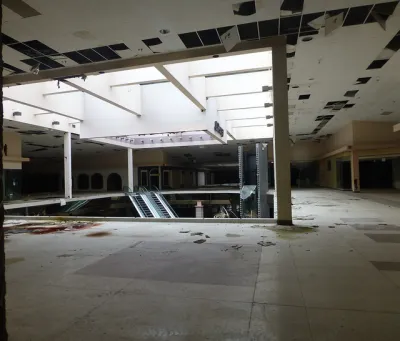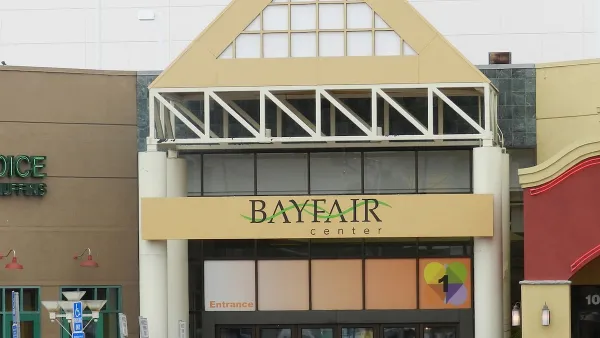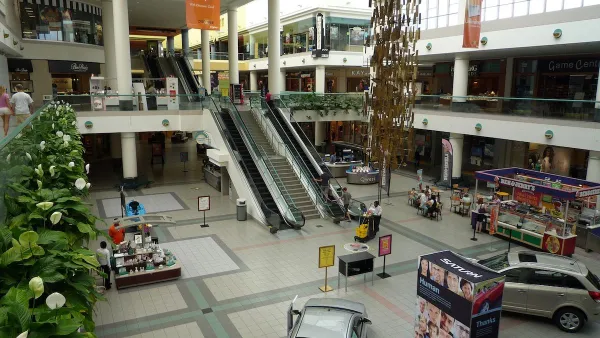Closed and struggling malls around the country are being repurposed as healthcare centers.

Sprawling suburban malls have fallen on hard times lately. But as Blake Farmer reports, the largely defunct complexes are serving a new function: healthcare. “What big-city health systems need most is something shopping malls have plenty of: space and parking. They offer convenience for patients and practitioners, as well as costing less than expanding an existing hospital campus.”
According to the article, “Nationwide, 32 enclosed malls house health care services in at least part of their footprint, according to a database kept by Ellen Dunham-Jones, a Georgia Tech urban design professor.” Many of these opened during the pandemic, writes Farmer, “but medicine’s reuse of retail space is more than pandemic opportunism, according to a November article in the Harvard Business Review. The three authors suggest the rise of telemedicine and continued push toward outpatient procedures will make malls increasingly attractive locations for health care.”
Meanwhile, “Mall locations remain desirable. Many are even more convenient to dense populations and interstates than when they were built nearly 50 years ago, before surrounding suburbs filled in.” And the demographics make sense, too: “These areas are no longer filled primarily with young families, who first flocked to the planned neighborhoods and shopping centers built in the 1970s.” Now, “The adults are still in the suburbs, but the kids have long since grown,’ Dunham-Jones said. And now those aging parents who remain are ‘pretty heavy-duty health care consumers.’”
FULL STORY: Some struggling shopping malls in the U.S. are being converted into health clinics

National Parks Layoffs Will Cause Communities to Lose Billions
Thousands of essential park workers were laid off this week, just before the busy spring break season.

Retro-silient?: America’s First “Eco-burb,” The Woodlands Turns 50
A master-planned community north of Houston offers lessons on green infrastructure and resilient design, but falls short of its founder’s lofty affordability and walkability goals.

Delivering for America Plan Will Downgrade Mail Service in at Least 49.5 Percent of Zip Codes
Republican and Democrat lawmakers criticize the plan for its disproportionate negative impact on rural communities.

Test News Post 1
This is a summary

Test News Headline 46
Test for the image on the front page.

Balancing Bombs and Butterflies: How the National Guard Protects a Rare Species
The National Guard at Fort Indiantown Gap uses GIS technology and land management strategies to balance military training with conservation efforts, ensuring the survival of the rare eastern regal fritillary butterfly.
Urban Design for Planners 1: Software Tools
This six-course series explores essential urban design concepts using open source software and equips planners with the tools they need to participate fully in the urban design process.
Planning for Universal Design
Learn the tools for implementing Universal Design in planning regulations.
EMC Planning Group, Inc.
Planetizen
Planetizen
Mpact (formerly Rail~Volution)
Great Falls Development Authority, Inc.
HUDs Office of Policy Development and Research
NYU Wagner Graduate School of Public Service





























